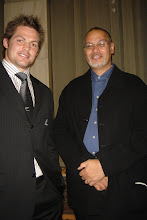To the Colonel,Friend, -Salutations to you. The end of that. Friend, do you give heed to our laws for regulating the fight.
Rule 1. If wounded or captured whole, and butt of the musket or hilt of the sword be turned to me, he will be saved.
Rule 2. If any Pakeha, being a soldier by name, shall be travelling unarmed and meets me, he will be captured, and handed over to the direction of the law.
Rule 3. The soldier who flees, being carried away by his fears, and goes to the house of the priest with his gun (even though carrying arms) will be saved. I will not go there.
Rule 4. The unarmed Pakehas, women and children, will be spared.The end. These are binding laws for Tauranga.
This was just what Cameron wanted. He quickly abandoned the Waikato and travelled to Taurange with a large force. In all there were over 1700 Imperial and local Militia concentrated at Te Papa. They brought with them some of the heaviest artillery yet …
Belich wrote:''The concentration of British artillery was of considerable power even in absolute terms. When it is considered that these guns fired unhampered by enemy artillery from a distance of 350 to 800 yards [320 to 730 meters] at a target of less that 3,000 square yards [2,500 square meters], their power appears awesome. Gate Pa was the ultimate test of strength between British and Maori military technologies, between modern artillery and the modern pa. In a wider sense, it was to be the first of many contests between breech-loading, rifled, composite-cast heavy artillery and trench-and-bunker earthworks."
Once again Cameron faced a Modern Pa, but this one was differerent to other fortifications. The pa was shelled from 9am until almost 4pm. When a breach had been made in the outer fence a force of 300 was sent into the pa. Confusion followed and the force was driven back.British casualties were more than a third of the assault force with 100 men killed or wounded. Ten officers were killed while 28 non-commissioned officers and privates were killed and 73 wounded. The 43rd Regiment lost 20 killed (including its colonel, Colonel Booth, 4 captains and a lieutenant) and 12 wounded.
The 68th Regiment lost 4 killed and 16 wounded. The Naval Brigade lost 13 killed (including virtually all of its officers) and 26 wounded. Total Maori losses were estimated at 25.In the confusion and rain that followed the Maori garrison faded into the bush.(New 2008: The blame game immediately followed.
 The Settlers and Government expecting a great victory charged the soldiers and the dead officers with cowardice. Cameron was also seen as a scapegoat, no-one it seemed was prepared to give the Maori their due. The Pa was by most measures a wondeful piece of construction. It withstood a massive bombardment and the defences seem to have forseen the style of attack with defences turned inward which mean there were no defenders to attack - they were all safely ensconced within their bunkers. having made their point the Ngaiterangi abandoned the Pa as was the custom.
The Settlers and Government expecting a great victory charged the soldiers and the dead officers with cowardice. Cameron was also seen as a scapegoat, no-one it seemed was prepared to give the Maori their due. The Pa was by most measures a wondeful piece of construction. It withstood a massive bombardment and the defences seem to have forseen the style of attack with defences turned inward which mean there were no defenders to attack - they were all safely ensconced within their bunkers. having made their point the Ngaiterangi abandoned the Pa as was the custom.Two months later a force of 1700 troops routed a 500 of Maori caugt in the middle of building a pa at Te Ranga. This defeat seemed to pacify the Ngatiterangi who surrendered their weapons at Te Papa a month later.
Much of this information came from: http://homepages.ihug.co.nz/~Sxmitch/Battle.html





Very informative. You are possibly the greatest history teacher in New Zealand. You are so good at history you could read the future like its already history. Thankyou very much.
ReplyDelete